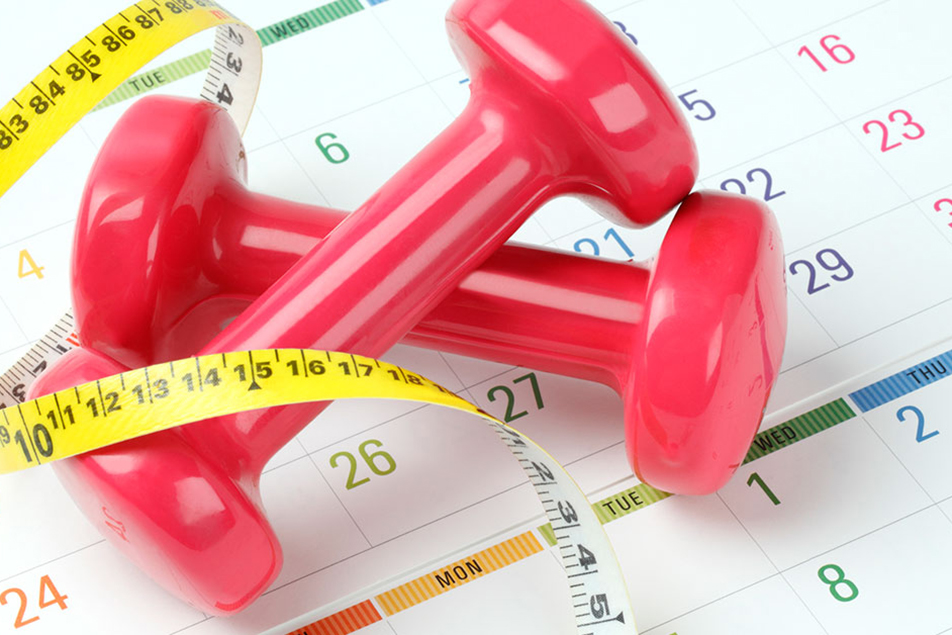Scroll through social media or pick up a magazine at the checkout and you’ll likely see a guarantee for transformation. “30 days to a slimmer you!” “The 10-day super diet!” “Drop a pant size in 5 days!” When it comes to healthy change, is there a magic number? We asked Kristen Ruble, MyWellbeing manager, The Parkview Center for Healthy Living, to explain the process for developing healthy habits that just might stick.
The truth is, the time it takes to make a healthy change is going to vary by the person. There is no set number. There are some important things people working to establish new habits — whether they’re related to food or exercise or sleep — need to know.
Why is change so hard?
Making new habits stick is tough because it’s not the current norm. It’s not what we’ve been doing day in and day out. When you’ve been doing something for so long, maybe years, it gets into your neuroscience. If you’ve had donuts for breakfast every day for 30 years, that’s what your body expects.
On top of that, you most likely have negative thoughts about making the change lurking in your subconscious because of a past failure. We have to change that thought process. You have to think you can be successful before you are successful. People go in way too quick, too fast, too soon, and it’s not sustainable. Pull the reigns back a little bit and be realistic. With exercise, for example, The American College of Sports Medicine recommends a 10 percent increase in physical activity each week. People have an all or nothing mentality because we’re in an instant gratification mindset. You think if you go all in, the response will be quicker. If someone is overweight, that weight didn’t come on fast, so you have to give yourself that time for it to come off. We can’t make a resolution and think that, because the calendar says “January 1,” it’s OK to go at it 150 percent. It’s not sustainable.
We also have a tendency to label things “bad,” which actually makes things more appealing. We find people have better luck when they incorporate everything into their plan because a plan that’s too restrictive is self-sabotage. If you want a donut, find a way to enjoy one every once in a while without the guilt.
And finally, I’d say it’s about the motivation. We have to make healthy changes, but we have to know why we want to make the change. If you don’t know, it’s not going to last very long. That’s why most people fail.
How to create a new habit.
When we coach people to establish new health behaviors, we take it from a step-by-step basis. So, we figure out where the person currently is and where they want to go. We start small because we want to create a plan that is sustainable.
To help a patient become successful, we 1) assess their readiness, and 2) assess their ability to think differently than they did before. We know their current thought process has gotten them where they are. If you want to change, the thought process has to change, too. You have to be ready to let experts guide you toward change. You have to see opportunities rather than barriers. Soccer practice has to be a chance to use the high school track rather than an excuse not to.
The 5 stages of change are:
1 - Pre-contemplation
2 - Contemplation
3 - Preparation
4 - Action
5 - Maintenance
You might think you should do something, you might try to do it, but you might not be ready. You have to be past the planning phase and be ready to implement. You have to be in the “no excuse” mentality; Nothing will get in your way. If you’re in pre-contemplation, there’s no point to go to a lecture. When you're in the pre-contemplation phase, a lecture isn't going to inspire you. If you’re contemplating, this is a time when a professional can help you decide if you’re ready to take on the challenge. Are you at least 80 percent confidant that you're ready to make a change? Then it's time to prepare. Preparation can help set SMART goals (specific, measurable, actionable or attainable, realistic and timely or time-based). If you have all those components you’re more likely to succeed and stick to it.
How long will it take?
Ultimately, you decide how long the process of change will take, but, again, be realistic. If you want to lose 15 pounds, that’s a shorter process than trying to lose 50 or 100 pounds. Once we’ve identified the overall goal, we can create a plan, starting with three-month goals. We look at the goal and break it down week by week, month by month, etc. If you’re starting from scratch, where is an achievable place to start? If you’re drinking four sodas a day, we’re going to drop down to just three sodas per day. That’s still taking out seven sodas in a week. We increase that goal on a weekly basis. There has to be progression, but it has to be small.
Every person is on a personal health journey. It could be 21 days for someone, or 30 days for another. If someone has smoked for 21 years, it’s going to take longer than 30 days to reverse the habit. The longer the habit existed, the longer it takes to create a new one. Research says, reversion starts at the three-month mark. After that we tend to go back toward our old ways. Make a plan, keep your eye on the goal and take it one week at a time.




